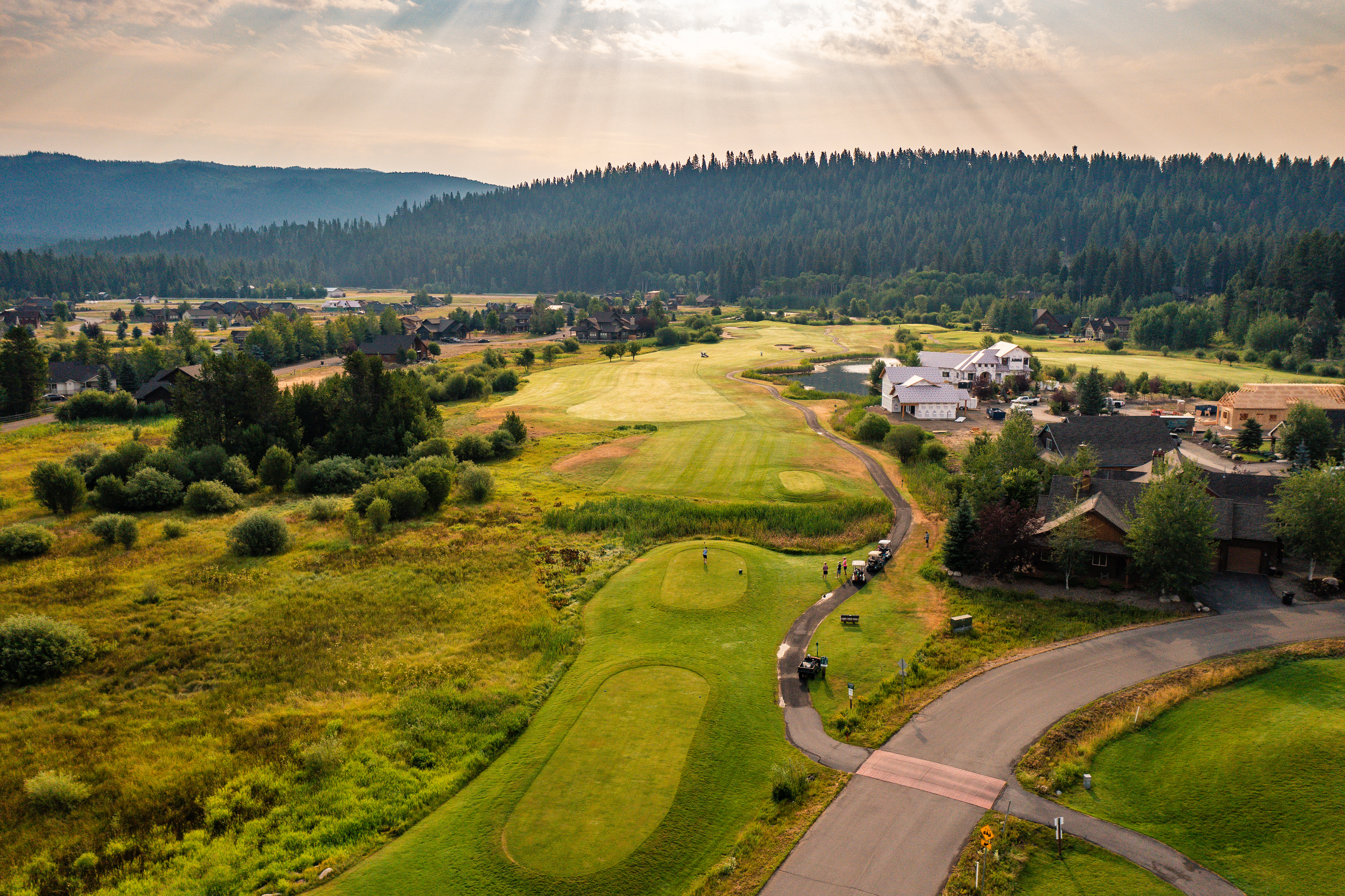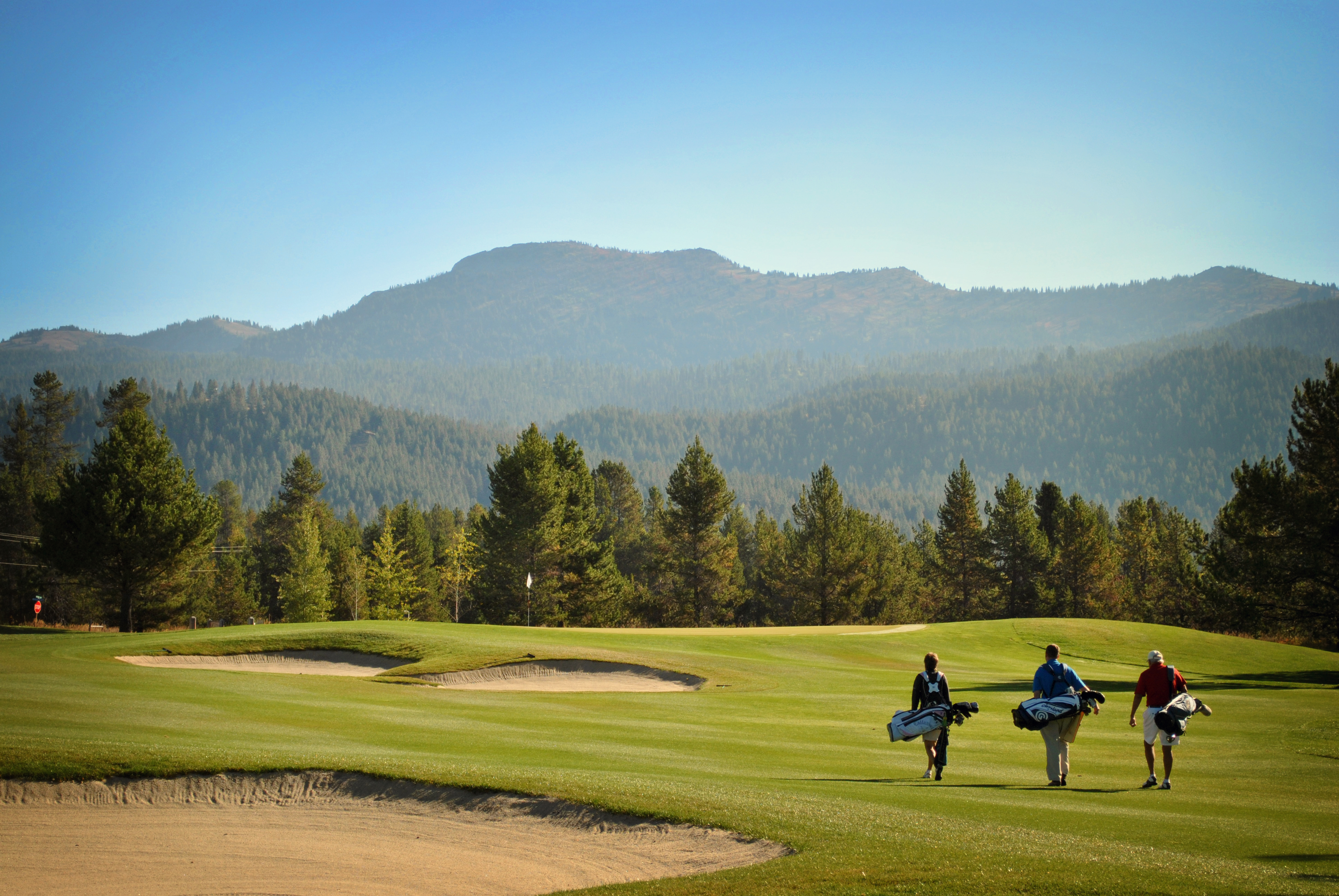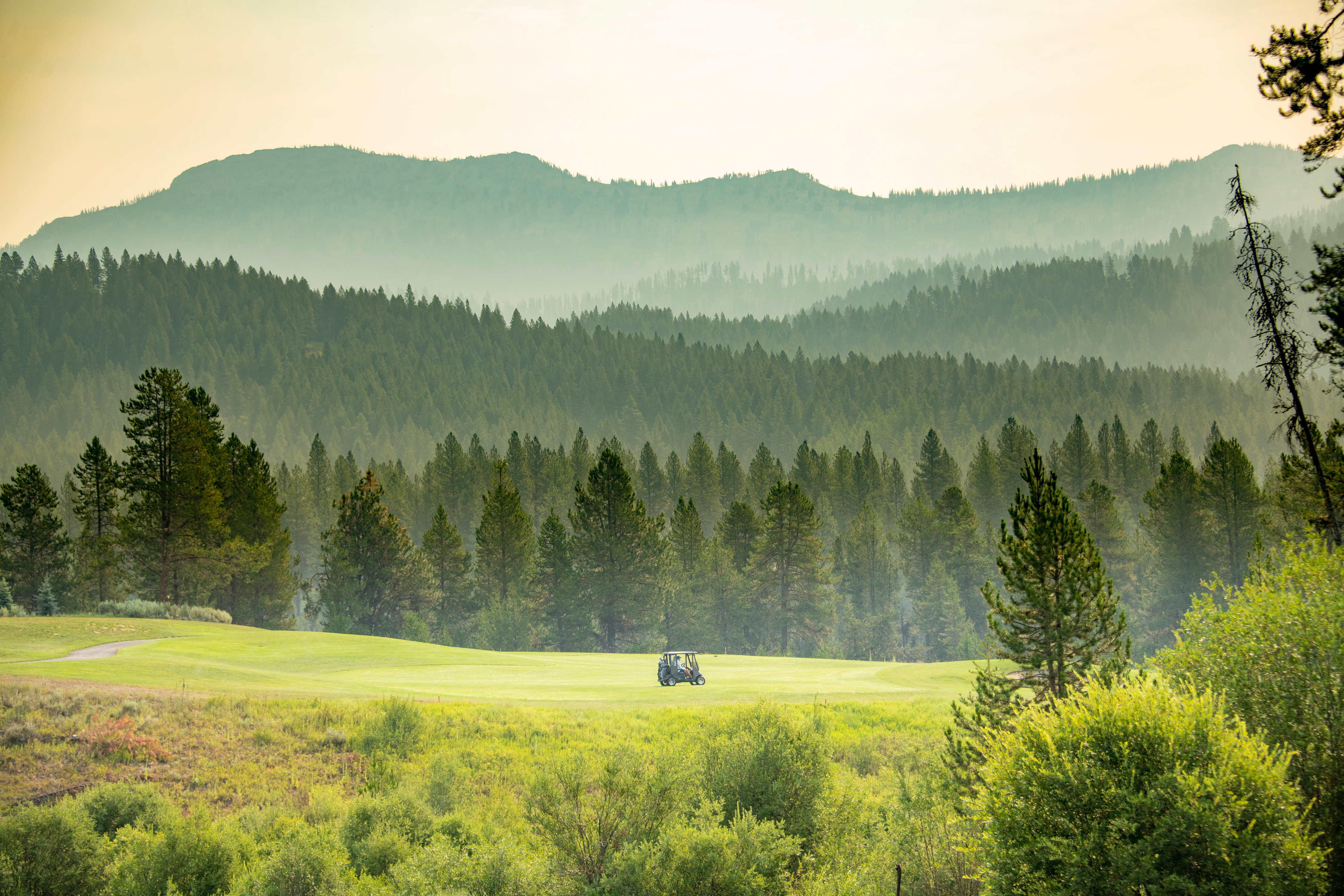
7 minute read
A ‘Gem’ of a Journey
Southwest Idaho’s great courses and magical terrain attract golfers far and wide
BY BOB SHERWIN • CG STAFF WRITER
Snow sells. It’s no secret that places where flakes fall in abundance, ski birds flock. They migrate to where slopes are groomed, lifts are swift, and everyone speaks fluent apres-ski.
No matter how far or how remote, skiers from far and wide will find those spots. That’s what folks at the Southwest Idaho Travel Association (SWITA) understood when it was founded in 1981. Promoting the Gem State’s many resorts (such as Sun Valley, Tamarack, and Schweitzer) was a natural fit.
But what about those other five months? In higher elevations? When green earth returns? Would it pay off for SWITA to promote golf for such a short season? Would golfers behave in the same manner? Driving four to eight hours from Seattle, Portland, Spokane and Salt Lake City to enjoy the state’s many golf courses? How much of a reach or a risk would that be?
“I think in 2004, when we opened, everything was a gamble,” says Dustin Ames, the head golf pro at the wilderness chic Jug Mountain Ranch, located about 110 miles north of Boise in rural McCall, Idaho. SWITA has worked with Ames for all 13 years he has been at Jug.
“There were golfers back then, and obviously, there are more golfers now,” he adds. “We’ve gotten lucky that the market has done very well the last few years here, and our course never fails to wow the golfers. With us utilizing SWITA, we’ve been able to branch out into the Spokane and Seattle markets more freely. We’re definitely bringing in a lot more golfers from those areas.”
Last year, golfers from Seattle ranked second (behind Boise) for the most frequent zip code to play Jug Mountain, with Spokane and Salt Lake City tied for third. It should be noted that it’s an eighthour drive from Seattle, a seven-hour trek from SLC and takes four to get there from Spokane. Even when golfers from all those cities take an hour-long flight into Boise, it’s still a two to three-hour drive to McCall.
SWITA has helped build up that allegiance over the years as the promotional arm for all the state’s attractions and activities, including skiing, snowmobiling, fishing, hiking, wine tours, festivals, various natural attractions, and some top golf courses.
Courses are divided into three regions: Treasure Valley (Boisearea), Mountain courses and Wine Country courses.


The Treasure Valley courses include Warm Springs GC in southwest Boise, Quail Hollow in the Boise foothills, BanBury GC, Eagle Hills GC, and Shadow Valley GC (all three in Eagle), plus Indian Lakes GC in Kuna.
The Wine Country courses are RedHawk GC in Nampa and Timberstone GC in Marsing.
Among the Mountain courses are Jug Mountain Ranch, Whitetail Club, and McCall GC (all in McCall), Terrace Lakes GC in Garden Valley, and the soon-to-be revived Osprey Meadows at Tamarack Ranch.
Jug Mountain Ranch and McCall Golf Club are the two jewels in the Mountain region. Jug Mountain is in the East Valley − 10 minutes from downtown McCall − and set against the 8,310-foot Jughandle Mountain. McCall GC is in the middle of the west central Idaho mountains.
Jug and McCall are the faces of Idaho golf, featured prominently in SWITA visitors’ material and provided with grants for appearances at golf shows and promotional events.
McCall GC is approaching its centennial anniversary − having opened in 1928 − nearly a decade before anyone ever shushed at Sun Valley, 80 miles (as the crow flies) to the southeast.
Local resident Robert Davis donated the land to the city for the first nine holes, and it wasn’t until 1966 that another nine was constructed to create the full 18, whose halves are known as the Aspen and the Birch Nines. An additional expansion in 1993, called the Cedar Nine, created a 27-hole complex.
“The third nine was built through the Spring Mountain Ranch subdivision,” says Eric McCormick, McCall’s superintendent who has been associated with SWITA for the past 17 years. “Aspen and Birch were intermingled to make 18 holes. Those are both tree lined and open. There are no bunkers which a lot of the old-timers prefer.”
There are plenty of bunkers on the newer, more mountainous Cedar nine, however. “And the fairways are real narrow,” McCormick adds. “There are a lot of tight OBs and plenty of wetlands, too. And you also see more wildlife on Cedar.”
McCormick says construction and maintenance on the three nines has been somewhat piecemeal over the years. A master plan for improvements has been developed, however, following the SWITA-inspired increase in demand. One of the projects completed last fall was rebuilding, leveling and adding tee boxes to the Aspen and Birch nines.

Cedar is unique in that there are three par 3s, but McCormick believes the 580-yard seventh is the hole most golfers will remember. Its right side is bordered by unyielding wetlands almost to the green, which is guarded by giant cedars to the right and bunkers on each side.
“It’s a tough hole,” says McCormick. “Not the drive so much, but that second shot. If you get a little sideways you can quickly get into the hazard.”
Built in 2004, Jug Mountain is the swanky new kid in town. Just south of downtown McCall (about a 15-minute drive from McCall GC), the course was designed by Donald Knott, a protégé of noted architect Robert Trent Jones, Jr. Knott has had a role in the design of more than 60 courses around the world, including The Links at Spanish Bay and Poppy Hills in California, as well as Makena, Princeville, and Poipu Bay in Hawaii. When Jug opened, it was rated the second-best new public course in the nation by Golf Digest.
“No fairways are parallel,” says Ames. “It’s out and back and utilizes all the terrain. There are six tree-lined holes, six water holes and six along the meadows. There are a lot of elevation changes, including the 100-foot drop from the first tee.”
Indeed, your opening drive on the 401-yard first hole is almost guaranteed to set your record for longest hang time. It also needs to be straight, as gnarly rough on both sides of the fairway can play havoc with your ball. Your second shot needs to clear the meandering stream in front of the green … and that’s just the beginning of your day.
Another hole that will stay with the golfers – for better or worse – is the 597-yard 16th. It is fraught with obstacles, a long unplayable canyon to be cleared on your drive, a blind sweeping right dogleg bordered on both sides by impenetrable brush, and another crooked stream that runs across the fairway and along the right side of the green.
“It’s very picturesque,” says Ames. “Our most photographed hole.”
This summer, the 1,410-acre property will add a six-hole par-3 course (also designed by Knott) located adjacent to the practice facility. That’s just another great reason to make the long drive to beautiful Jug Mountain.
For more information visit www.visitsouthwestidaho. org/golf-guide/ and begin to plan your Gem State golf journey.


Treasure Valley Golf Courses
• Warm Springs Golf Course — Southeast Boise
• BanBury Golf Course — Eagle
• Eagle Hills Golf Course — Eagle
• Shadow Valley Golf Course — Eagle
• Quail Hollow (elevated tees) — Boise Foothills
• Indian Lakes Golf Course — Kuna
Mountain Courses
• Jug Mountain Ranch — McCall
• Whitetail Club — McCall
• McCall Golf Course — McCall
• Terrace Lakes Golf Course — Garden Valley
• Osprey Meadows at Tamarack Resort
Wine Country Courses
• RedHawk Public Golf Course — Nampa
• TimberStone Golf Course — Marsing













